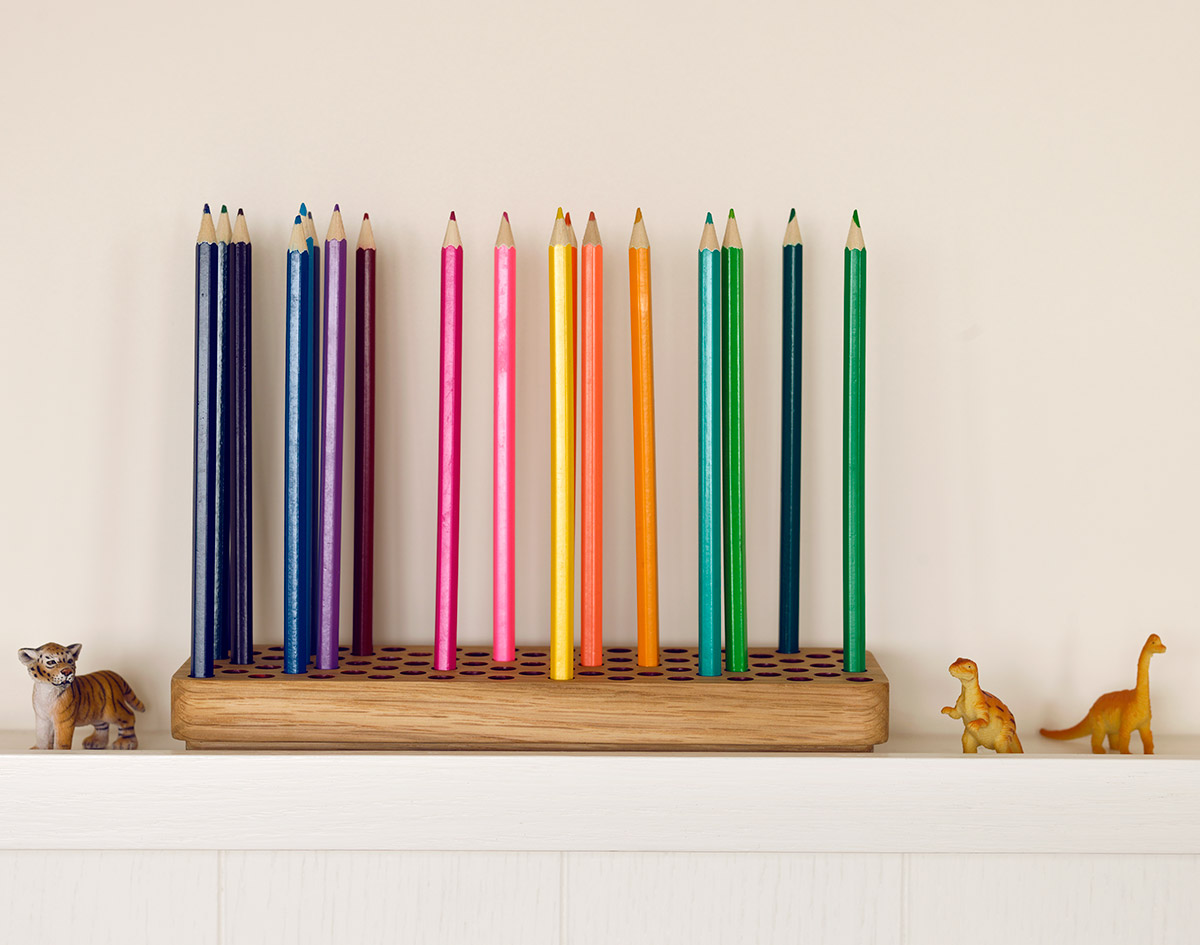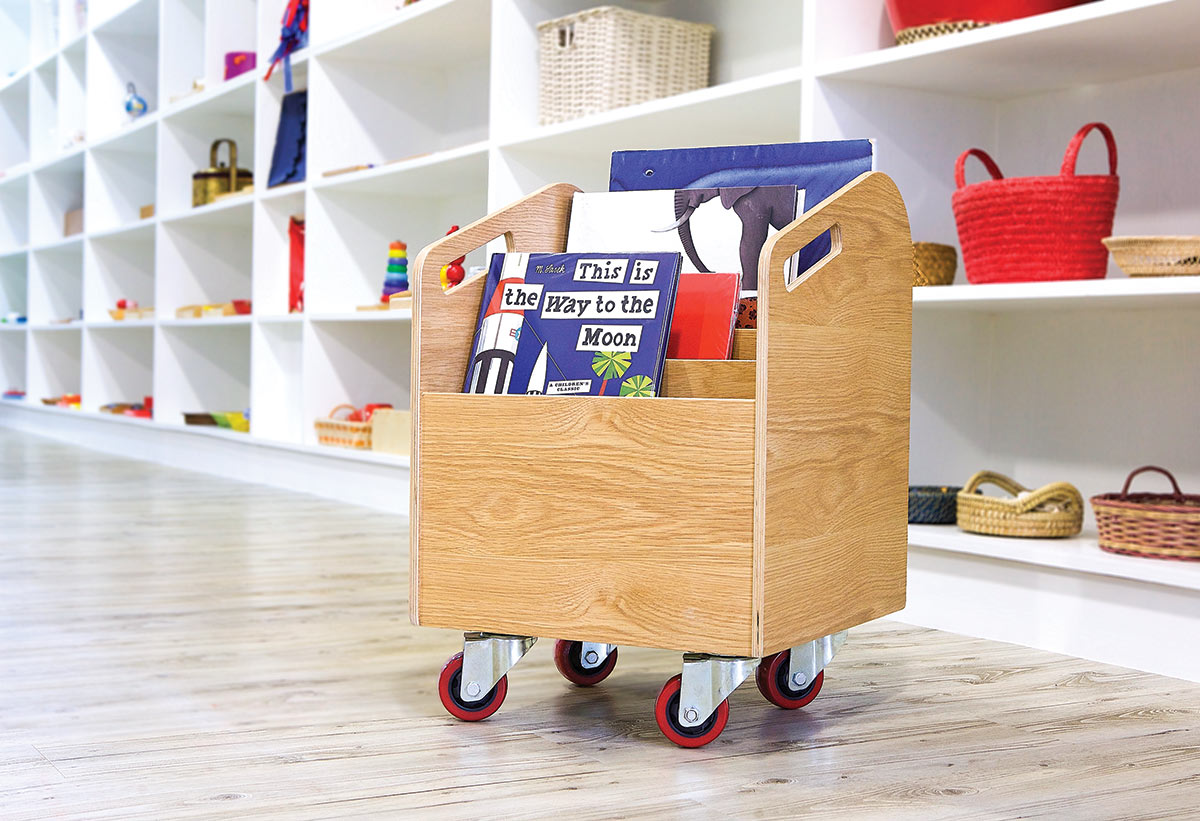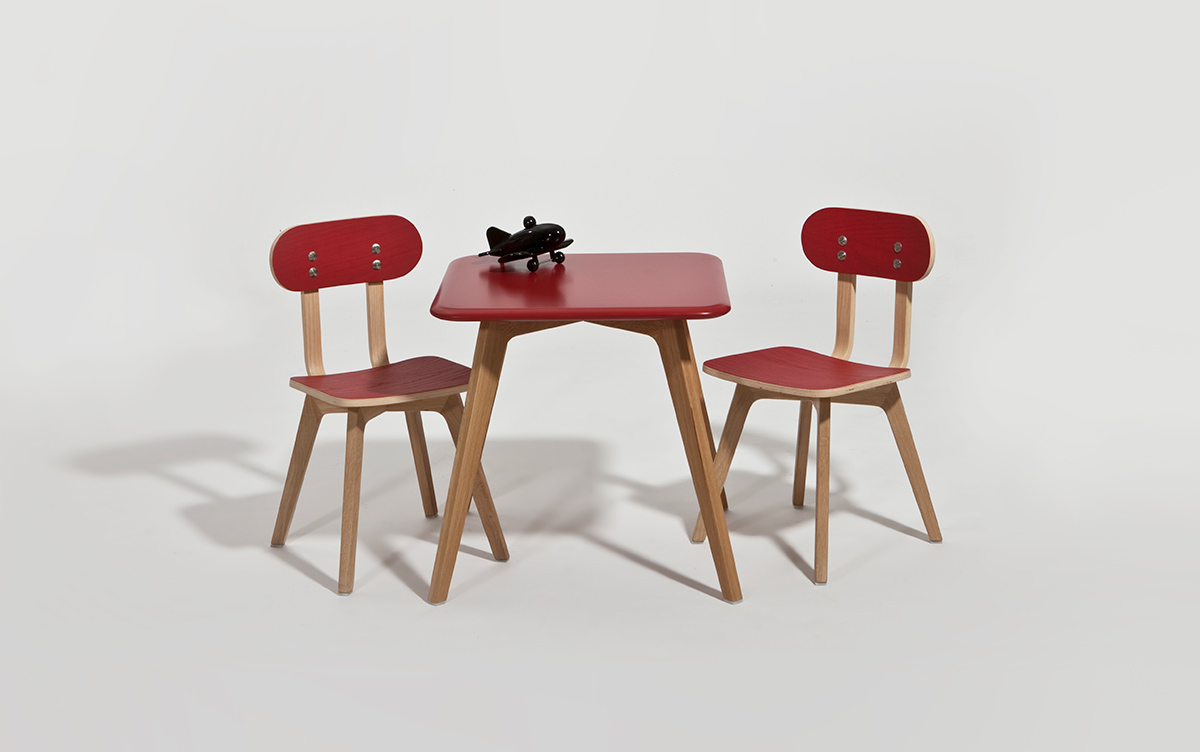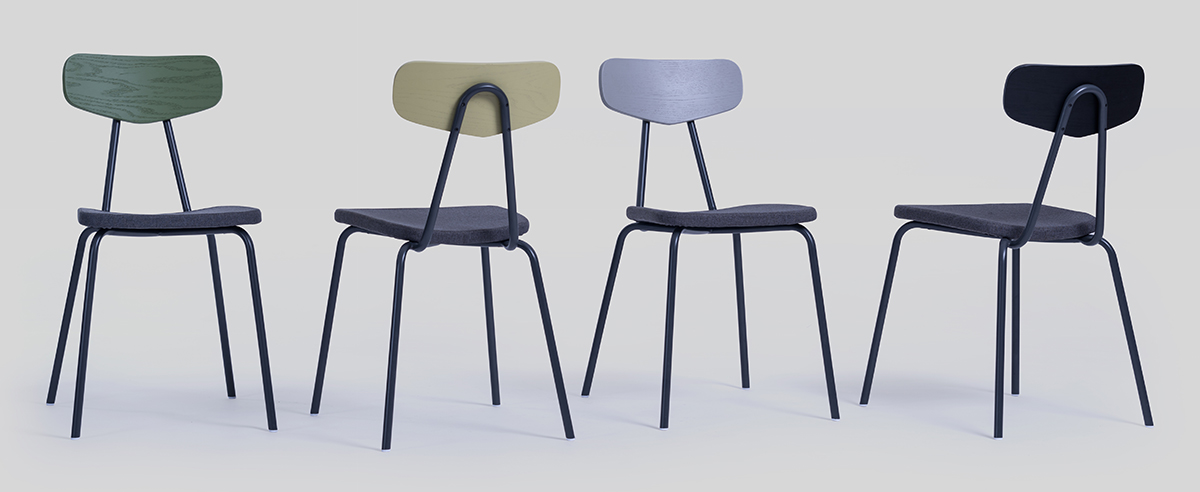Hong Kong-based designer, Silvia Marlia, shares the philosophy behind her furniture line Sand, which is known for its inspiring and thoughtful designs catered just for children.
How did Sand come about?

Not merely to create a sense of order on a desk, this pencil tray for Sand is also meant to train children’s motor skills.
Children and education are one of my passions. Sand started in 2012 as I wanted to offer beautiful yet purposeful products that are correct for children. I mixed in my love for contemporary designs with non-traditional education systems. I was also trained as a Montessori teacher, so that gave me the knowledge I needed to create this children’s furniture brand.

This book and magazine organiser on wheels lets little homeowners cart their favourite titles around.
What’s the philosophy behind the designs for Sand?
It’s based on the Montessori approach of education, in which children need to be independent and take care of their own belongings. The designs are based on their proportions. So besides their height and age, I also take into consideration their strength level. My designs have rounded edges, not only to protect children but also because I believe we don’t need any more sharpness or harshness in this world. I focus a lot on refining the motor skills of the children, while the materials I use are meant to stimulate their tactility. Children use a lot of their hands to explore to acquire knowledge so I use a lot of wood in my designs as I wanted them to touch and love wood. I am completely against plastic and the artificial approach, as I believe children should be closer to nature.

Sand furniture takes into account your tykes’ height, age and strength.
We always know you as a maker of children’s furniture. What else do you do?
I also design furniture for adults. Most of my designs take on a feminine aesthetic, so they are slim, elegant and full of grace. I feel there is a lack of feminine designs in the market, which is why I wanted to bring in a bit of that. I also design commercial interiors such as hotels, restaurants and boutique shops.

Besides designing children’s furniture, Silvia also creates feminine-looking pieces for other furniture brands.
Being based in Hong Kong, what do you like most about the city?
I like it when the sounds of the city die down and the lights are still alive. Because there is a lot of humidity in the country, the lights become kind of blurred. I really like this spectacle. It brings to mind a very futuristic city.
What do you wish to design next?
I want to do more home accessories for children. I also hope to develop rocking chairs and lamps.
This was adapted from an article originally written by Ho Pei Ying in the July issue of SquareRooms.



